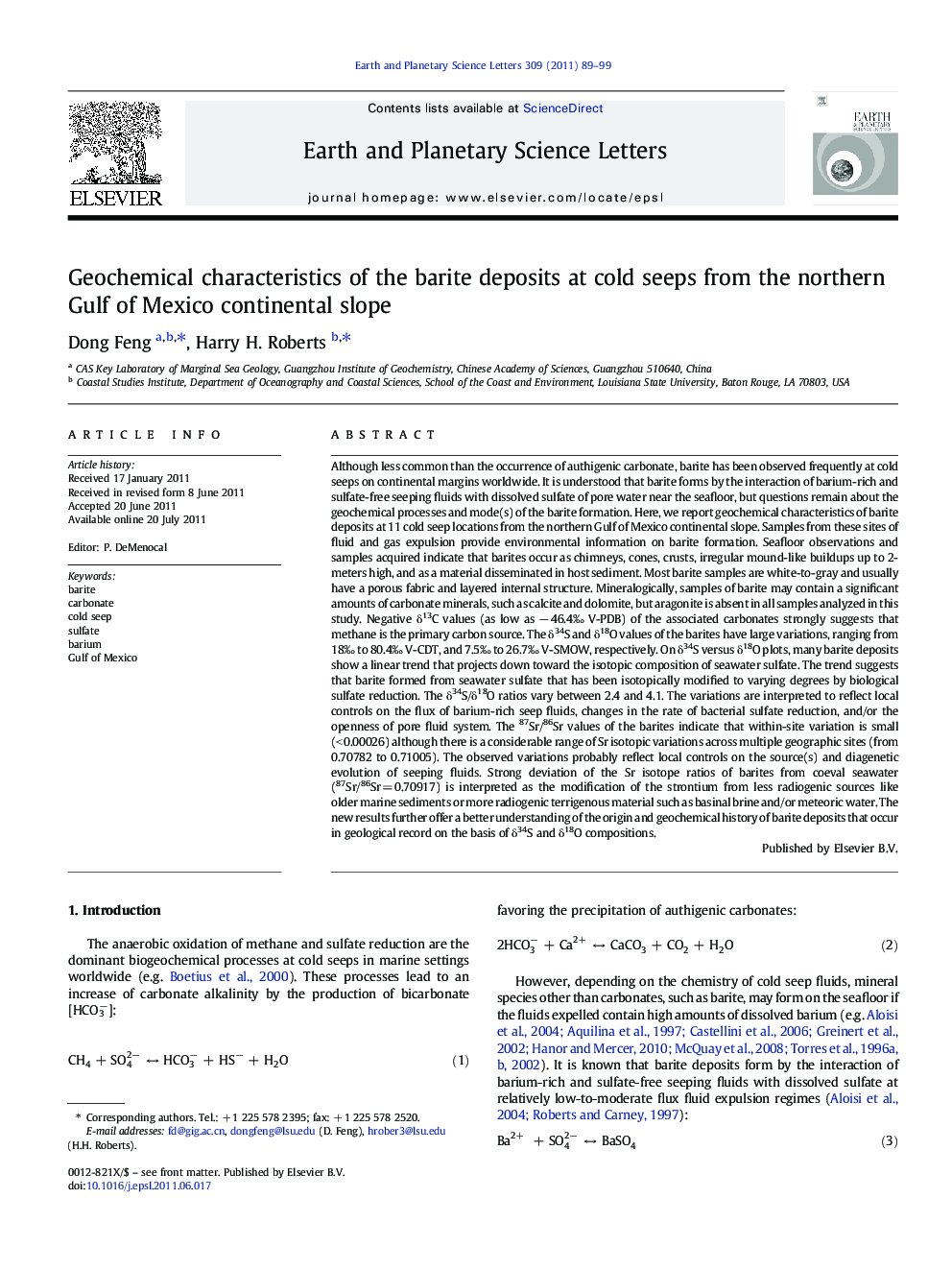| Article ID | Journal | Published Year | Pages | File Type |
|---|---|---|---|---|
| 4677936 | Earth and Planetary Science Letters | 2011 | 11 Pages |
Although less common than the occurrence of authigenic carbonate, barite has been observed frequently at cold seeps on continental margins worldwide. It is understood that barite forms by the interaction of barium-rich and sulfate-free seeping fluids with dissolved sulfate of pore water near the seafloor, but questions remain about the geochemical processes and mode(s) of the barite formation. Here, we report geochemical characteristics of barite deposits at 11 cold seep locations from the northern Gulf of Mexico continental slope. Samples from these sites of fluid and gas expulsion provide environmental information on barite formation. Seafloor observations and samples acquired indicate that barites occur as chimneys, cones, crusts, irregular mound-like buildups up to 2-meters high, and as a material disseminated in host sediment. Most barite samples are white-to-gray and usually have a porous fabric and layered internal structure. Mineralogically, samples of barite may contain a significant amounts of carbonate minerals, such as calcite and dolomite, but aragonite is absent in all samples analyzed in this study. Negative δ13C values (as low as − 46.4‰ V-PDB) of the associated carbonates strongly suggests that methane is the primary carbon source. The δ34S and δ18O values of the barites have large variations, ranging from 18‰ to 80.4‰ V-CDT, and 7.5‰ to 26.7‰ V-SMOW, respectively. On δ34S versus δ18O plots, many barite deposits show a linear trend that projects down toward the isotopic composition of seawater sulfate. The trend suggests that barite formed from seawater sulfate that has been isotopically modified to varying degrees by biological sulfate reduction. The δ34S/δ18O ratios vary between 2.4 and 4.1. The variations are interpreted to reflect local controls on the flux of barium-rich seep fluids, changes in the rate of bacterial sulfate reduction, and/or the openness of pore fluid system. The 87Sr/86Sr values of the barites indicate that within-site variation is small (< 0.00026) although there is a considerable range of Sr isotopic variations across multiple geographic sites (from 0.70782 to 0.71005). The observed variations probably reflect local controls on the source(s) and diagenetic evolution of seeping fluids. Strong deviation of the Sr isotope ratios of barites from coeval seawater (87Sr/86Sr = 0.70917) is interpreted as the modification of the strontium from less radiogenic sources like older marine sediments or more radiogenic terrigenous material such as basinal brine and/or meteoric water. The new results further offer a better understanding of the origin and geochemical history of barite deposits that occur in geological record on the basis of δ34S and δ18O compositions.
► Seep barites are excellent archives recording S and O isotope fractionations. ► S and O isotope fractionations of barites are mainly controlled by kinetic effects. ► δ34S/δ18O of barites are induced by varying fluid flow and sulfate reduction rate. ► Barium-rich fluids originated from basinal brine/meteoric water or a deeper origin.
